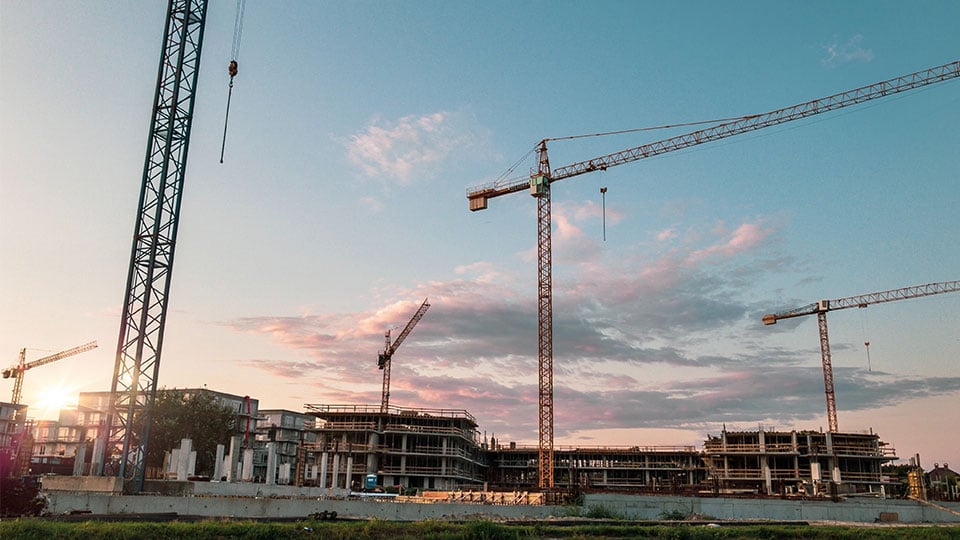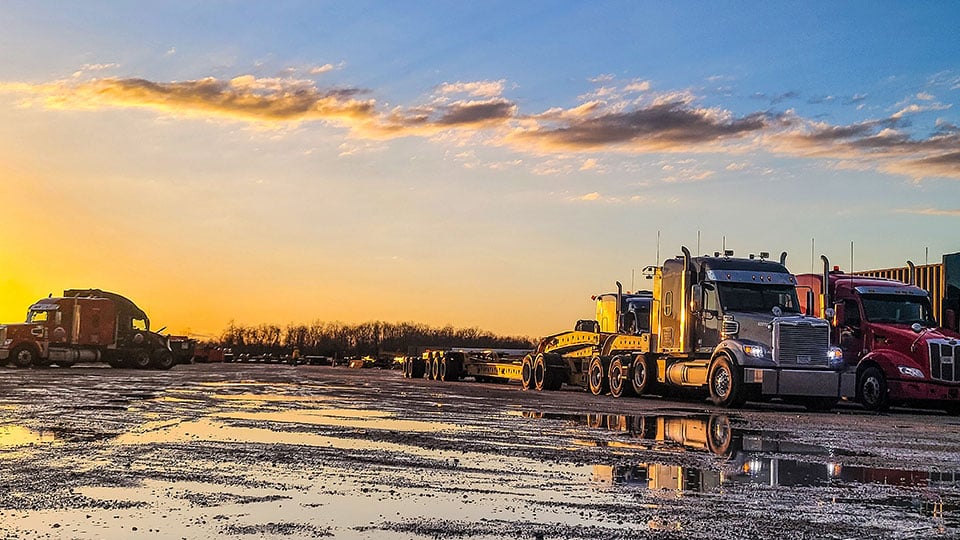
One of the most intriguing things about working in the transportation industry is the sheer diversity of products transportation companies, like Anderson Trucking Service (ATS), get to move. In fact, every product on earth is touched by the transportation sphere in some way during its lifecycle.
Around the world, trucking companies — big and small — shoulder much of this burden. While some shipments are more complex than others, successfully executing any load takes expertise, oversight and planning.
That said, as your transportation requirements become more intricate, the need for these things increases. For example, a non-divisible, over-dimensional (OD) shipment is, by its nature, more difficult to arrange and manage than a legal shipment — which wouldn’t require permits, let alone any other OD considerations.
Sequential project shipments — where each inbound truck needs to arrive at a loading site, collect its cargo and depart in a certain order — are some of the most logistically complicated to oversee.
Moving cranes to/from a job site falls into this category. These are often massive undertakings and failing to execute them correctly can cost you money in multiple ways: loading/unloading crews standing around, construction/projects stalled in limbo and transportation expenses rising unnecessarily. Having an understanding of what your partners expect of you can pay dividends by helping you avoid these issues
Here at Anderson Trucking Service (ATS), we have an entire team of professionals dedicated to heavy-haul crane moves. This service, which we’ve been offering for more than four decades now, is certainly one of our more specialized ones. That said, with the right information, your next crane shipment — whether it's to or from a job site — can be successful.
In this article, we’ll break down four key things you can do to smoothly ship your crane from A to B. By making these things a priority, you won’t have any trouble executing a successful shipment — provided you’re working with a great heavy haul carrier, of course.
Four things you can do to help your crane shipments go smoothly are:
- Communicate all pertinent crane details
- Have a load-out plan
- Provide robust site information
- Stick to the load-out order stated on each driver’s bill of lading (BOL)
1. Communicate All Pertinent Crane Details
When it comes to your transportation-provider relationships, open and easy lines of communication are one of your most crucial assets. This fact holds true regardless of what type of freight you commonly ship.
There’s nothing more important than being on the same page with the carriers you utilize. Since these companies are responsible for keeping your cargo in good condition and delivering it on time, you need them to understand your freight intimately. Maybe not as well as you do, but close.
As you make arrangements for the transportation of a crane to/from a job site or another location, you simply can’t share “too much” information with your provider.
You’ll want to make sure your transportation provider understands what they’ll be hauling so they can plan accordingly. While this isn’t a comprehensive list (we’d recommend you include as many details as possible), be sure to communicate:
- The crane’s exact make
- The crane’s exact model
- The dimensions of every piece that will need to be moved
The more information you can provide the better.
2. Have a Load-Out Plan
Having a load-out plan is essential for efficiently shipping a crane to and from a job site. These are intricate machines, making it impossible to effectively move them without being on the same page with your transportation provider.
For this reason, as you arrange your crane’s transport, make sure to communicate — as far in advance as possible — your crane’s projected tear-down and load-out schedules.
These plans can take many forms.

That said, a detailed document outlining the crane’s tear-down stages/timelines, how disassembly will be done (some cranes tear themselves down, others require assist cranes) is helpful.
With this information, your transportation provider can plan accordingly, ensuring they meet your needs. Among other things, having a load-out plan to coordinate around allows your carrier to ensure each load’s optimal route, timely execution and compliance with rules and regulations.
As the party responsible for arranging your crane’s transport, here are four reasons having a load-out plan is important:
- Safety: Cranes are large and heavy pieces of equipment that require specialized handling and transport. Without a load-out plan, there is a risk of accidents, damage to the crane and injury to workers. A load-out plan ensures that all necessary precautions are taken to minimize these risks.
- Efficiency: A well-planned load-out ensures that each piece is loaded quickly and efficiently, reducing downtime and ensuring that the crane arrives at its destination job site on time. This helps to keep your project on schedule and avoid costly delays.
- Legal Compliance: Shipping a crane requires compliance with various regulations and requirements, including weight limits, transportation permits, and safety regulations. A load-out plan ensures that all these requirements are met, reducing the risk of fines, penalties, or delays due to non-compliance.
- Cost-Effectiveness: By having a load-out plan in place, your transportation company can optimize inbound truck scheduling, choose the most efficient route, and avoid unnecessary delays — all of which can reduce your overall cost of shipping the crane.
3. Provide Robust Site Information
It’s always helpful for your trucking company to know what they’re getting into by accepting your shipment. Most specifically, carriers like to understand the specifications of each loading/unloading site their drivers will be expected to navigate.
This information helps them ensure that, when a driver arrives, nothing is left to chance and they aren’t surprised in any way. Understanding your loading/unloading location — what it looks like and how to navigate it — is even more crucial when shipping a crane.
Since these shipments are time-sensitive and often involve various trailer types. the more your carrier knows about your location the better.
Be sure to communicate key site details to your transportation provider including:
- Exact location (address)
- Overall loading space size
- Entry points
- Exit points
- Tight corners/tricky areas
- Where trucks can be staged (if necessary)
Including a map of each location with this kind of information highlighted on it will help your trucking company ensure great service.
4. Stick to the Load-Out Order Stated on Each Bill of Lading (BOL)
This final tip is a little less intuitive than the others. You see, in planning for your freight move, your carrier — with your and your vendor’s input — has designated a specific truck for every load.
The crane pieces each truck has been assigned will appear on its BOL. Sometimes these BOLs are numbered and sometimes they aren’t. In the end, this load-out order is important to follow.
Too often, trucks exit a site with a load that wasn’t specified on their BOL. This becomes a problem on the back end when communication as to the location of certain parts becomes inaccurate. As the loadout progresses, this can also create confusion on what trailer types are arriving for the remaining loads.
For these reasons, make sure everyone is aware of the load-out plan, and which pieces each truck is arriving to pick up.

Use a Great Heavy Haul Carrier to Ship Your Crane
In the end, shipping a crane is complex — far more intricate than this article could cover. As such, you don’t want to trust these shipments to under-experienced companies. Sure, as long as you provide accurate crane details, create and share a load-out plan, communicate intricate site details and stick to what’s stated on each inbound truck’s BOL, this process should go smoothly.
That said, without a good carrier on your side, everything could still fall apart.
So, to help you choose the best heavy haul transportation provider for your next crane move, here is a free Heavy Haul Carrier Selection Checklist you can download. Use it to vet heavy haul carriers in the future; this will help you steer clear of providers that simply can’t get the job done.
Here at ATS, we take pride in our ability to move even the largest of cranes. Our team of in-house experts (who literally do this every day) are here to help you if you need it. If you’re interested in learning a bit more about what this could look like for you, feel free to check out our Heavy Haul Services page here or contact us directly. We’re happy to help you in any way you need.

